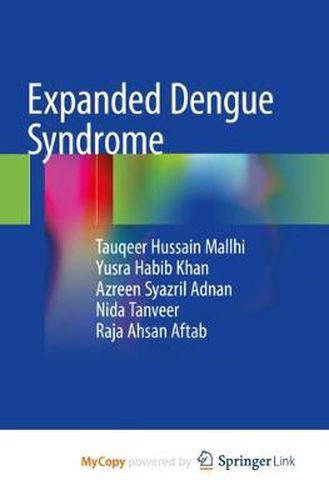Readings Newsletter
Become a Readings Member to make your shopping experience even easier.
Sign in or sign up for free!
You’re not far away from qualifying for FREE standard shipping within Australia
You’ve qualified for FREE standard shipping within Australia
The cart is loading…






The book discusses all aspects of expanded dengue syndrome (EDS), an emerging entity of dengue infection, and serves as definitive source of information for health care professionals.
With each chapter focusing on a different type of EDS, the book covers the definition, concept, prevalence, pathophysiology, management, complications and outcomes of the condition. It also highlights the impact of the disease on healthcare. Further, based on both basic and the latest, cutting-edge research, it examines treatments, algorithms, standard treatment guidelines and the pharmacotherapy of EDS.
EDS is referred to as atypical/unusual manifestations of the dengue infections, also termed as isolated organopathies, including hepatic, renal, cardiac, respiratory and neurological involvements that could be explained as a result of severe, profound shock or associated with underlying host conditions or co-infections. Raising awareness of this neglected and little-known complication of dengue infection, the book serves as an educational and teaching aid and useful resource for upper-undergraduate students. It also provides up-to-date reference material for researchers in academia and corporations as well as for clinicians wanting to improve the management of EDS during dengue outbreaks.
$9.00 standard shipping within Australia
FREE standard shipping within Australia for orders over $100.00
Express & International shipping calculated at checkout
The book discusses all aspects of expanded dengue syndrome (EDS), an emerging entity of dengue infection, and serves as definitive source of information for health care professionals.
With each chapter focusing on a different type of EDS, the book covers the definition, concept, prevalence, pathophysiology, management, complications and outcomes of the condition. It also highlights the impact of the disease on healthcare. Further, based on both basic and the latest, cutting-edge research, it examines treatments, algorithms, standard treatment guidelines and the pharmacotherapy of EDS.
EDS is referred to as atypical/unusual manifestations of the dengue infections, also termed as isolated organopathies, including hepatic, renal, cardiac, respiratory and neurological involvements that could be explained as a result of severe, profound shock or associated with underlying host conditions or co-infections. Raising awareness of this neglected and little-known complication of dengue infection, the book serves as an educational and teaching aid and useful resource for upper-undergraduate students. It also provides up-to-date reference material for researchers in academia and corporations as well as for clinicians wanting to improve the management of EDS during dengue outbreaks.